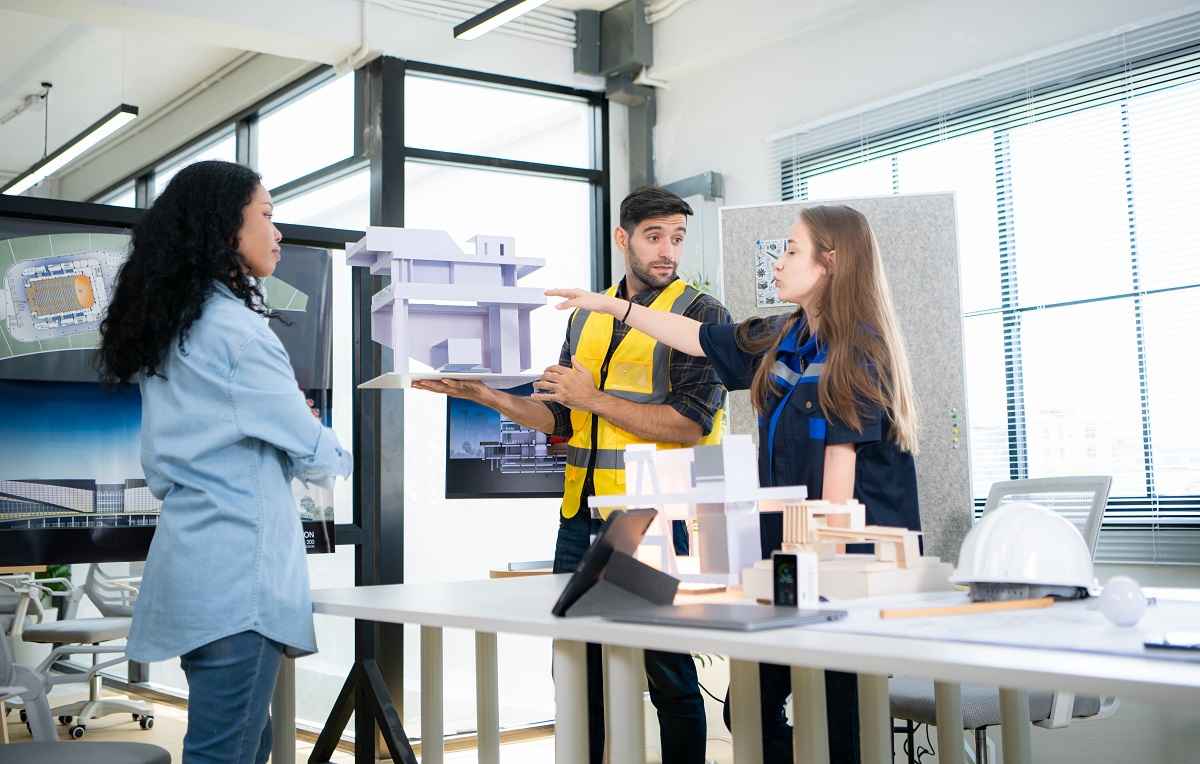What Is Sustainable Building Design?
Sustainable building design refers to the practice of creating structures that are environmentally responsible and resource-efficient throughout their lifecycle. This approach to building design aims to minimize environmental impact, reduce energy consumption, and promote the use of sustainable materials. Sustainable building design encompasses a range of principles, including energy efficiency, water conservation, indoor air quality, and the use of renewable resources.
Sustainable building design emphasizes the use of energy-efficient systems, such as high-efficiency HVAC (heating, ventilation, and air conditioning) systems, energy-saving lighting, and renewable energy sources like solar panels. These systems help reduce the building’s energy consumption and carbon footprint. Additionally, sustainable building design focuses on water conservation, incorporating features like low-flow fixtures and rainwater harvesting to reduce water usage.
An essential aspect of sustainable building design is building materials. Sustainable buildings often use materials that are recycled, renewable, or sourced from sustainable practices. These materials contribute to a lower environmental impact and reduce the need for non-renewable resources. Sustainable building design also prioritizes indoor air quality, using non-toxic and low-emission materials to create healthier indoor environments.
Sustainable building design is often associated with green building certifications, such as LEED (Leadership in Energy and Environmental Design) and BREEAM (Building Research Establishment Environmental Assessment Method). These certifications provide a framework for evaluating the sustainability of a building and recognize structures that meet specific sustainability criteria.
Why Learn About Sustainable Building Design Nowadays?
Learning about sustainable building design is more relevant than ever as the world seeks to reduce carbon emissions and promote sustainability. Buildings are responsible for a significant portion of energy consumption and greenhouse gas emissions, making sustainable building design a key component of addressing climate change. Here are a few reasons why learning about sustainable building design is valuable:
First, sustainable building design is crucial for environmental sustainability. By reducing energy consumption and using sustainable materials, these buildings have a lower environmental impact. Learning about sustainable building design gives you the skills to contribute to a more sustainable built environment.
Second, sustainable building design plays a key role in energy efficiency and conservation. Sustainable buildings incorporate energy-efficient systems and renewable energy sources, reducing energy waste and lowering utility costs. This focus on energy efficiency is crucial for addressing climate change and promoting sustainability.
Third, learning about sustainable building design offers a wide range of career opportunities. Professionals with expertise in sustainable building design can work in various industries, including architecture, construction, engineering, and sustainability consulting. The ability to design and manage sustainable buildings is highly valued, providing career growth and development opportunities.
Additionally, sustainable building design supports health and well-being. By prioritizing indoor air quality and non-toxic materials, sustainable buildings create healthier indoor environments. This focus on health and well-being drives the adoption of sustainable building practices and promotes a better quality of life for occupants.
Work in Sustainable Building Design
Working in sustainable building design involves a variety of tasks, from designing sustainable buildings to managing construction projects and ensuring compliance with green building certifications. Sustainable building designers and engineers collaborate with various stakeholders, including architects, construction firms, and environmental consultants, to ensure that buildings are designed and constructed sustainably.
A typical day for a sustainable building design professional might include developing building plans, selecting sustainable materials, and coordinating with project teams. Sustainable building designers use tools like computer-aided design (CAD) software, energy modeling programs, and green building assessment tools to design energy-efficient buildings and track project progress. They also focus on energy efficiency, water conservation, and indoor air quality to ensure that buildings meet sustainability criteria.
Sustainable building design professionals often specialize in specific areas, such as energy-efficient building design, green building certifications, or sustainable construction practices. Each specialization requires unique skills and knowledge. For example, energy-efficient building designers focus on creating buildings that use less energy, while green building certification specialists ensure that buildings meet the requirements for certifications like LEED or BREEAM.
The work environment for sustainable building design can vary, with professionals spending time in offices, construction sites, and meeting rooms to coordinate with project teams. This variety adds to the appeal of the career, offering a mix of design work and hands-on construction management.
Career progression in sustainable building design can lead to roles like senior sustainable building designer, project manager, or director of sustainable building projects. With experience, sustainable building design professionals may move into leadership positions, overseeing sustainable building departments and driving green building strategies. Some sustainable building design professionals also choose to work in consulting, providing sustainable building expertise to various organizations.
Why Is Sustainable Building Design Crucial for Innovation?
Sustainable building design is crucial for innovation because it provides a framework for creating buildings that are both environmentally responsible and resource-efficient. These designs drive innovation by promoting energy efficiency, reducing carbon emissions, and improving the quality of life for building occupants. Here are some reasons why sustainable building design is key to innovation:
First, sustainable building design fosters environmental sustainability. By reducing energy consumption and using sustainable materials, these designs contribute to a lower environmental impact. This focus on sustainability drives innovation by encouraging the development of greener building practices and technologies.
Second, sustainable building design is essential for energy efficiency and conservation. Sustainable buildings incorporate energy-efficient systems and renewable energy sources, reducing energy waste and utility costs. This emphasis on energy efficiency drives innovation by promoting the adoption of energy-saving technologies and practices.
Third, sustainable building design supports health and well-being. By prioritizing indoor air quality and using non-toxic materials, sustainable building designs create healthier indoor environments. This focus on health and well-being fosters innovation by promoting practices that improve the quality of life for building occupants.


